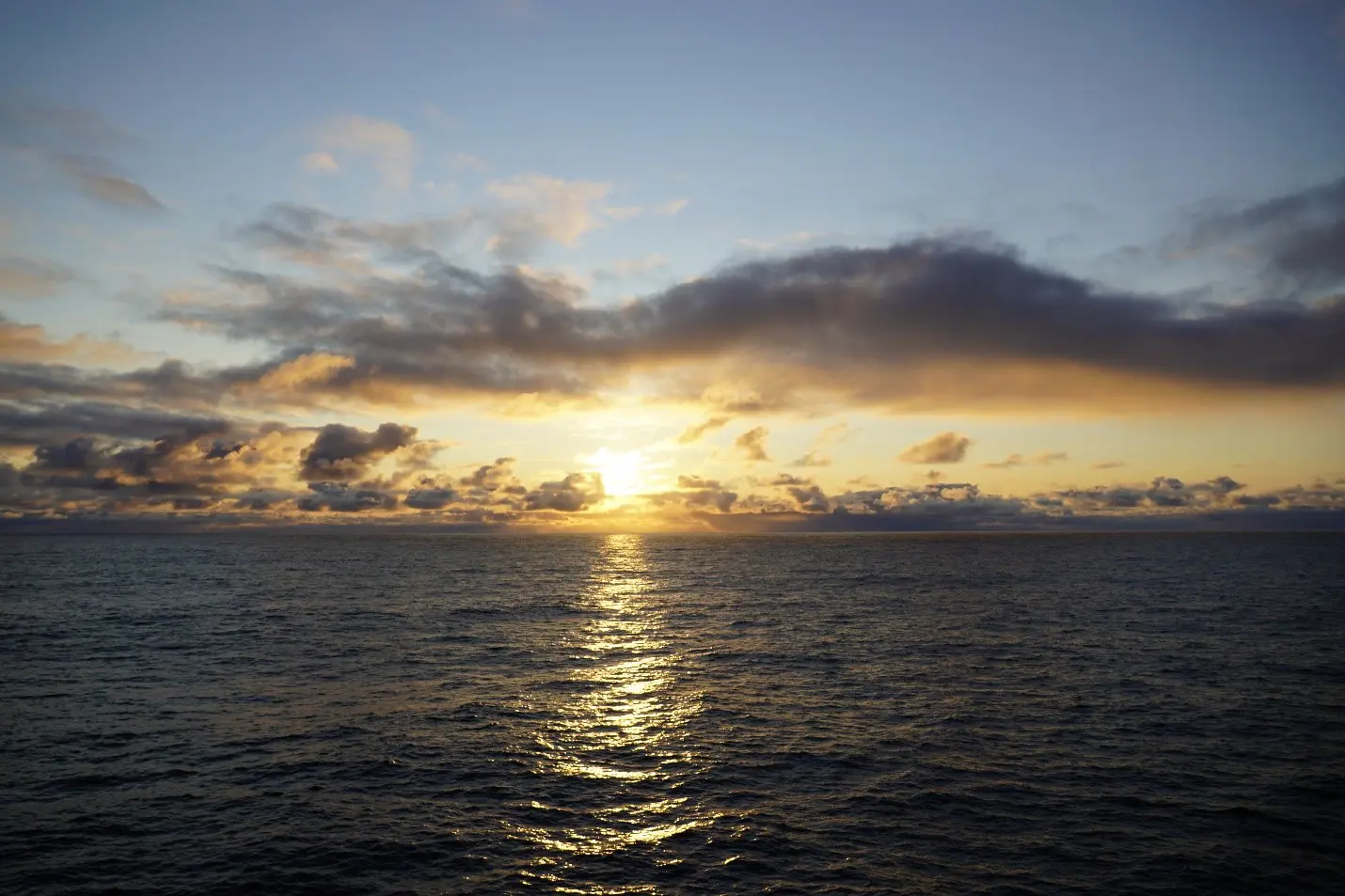Drilling the mid-Norwegian volcanic margin

The seagoing research vessel drills core samples and collects measurements from under the sea floor. Photo: Peter Betlem
Top image: The seagoing research vessel drills core samples and collects measurements from under the sea floor. Photo: Peter Betlem
In early August, the JOIDES Resolution (JR) scientific drilling vessel headed out for a 61-day expedition as part of the International Ocean Discovery Program. Expedition 396 targets the mid-Norwegian volcanic margin, some 350 kilometres west of the Norwegian shore.
8 September 2021
Text: Maria Philippa Rossi
The seagoing research vessel drills core samples and collects measurements from under the sea floor. This way, scientists are given a glimpse into earth’s development. Data from the drilling offer a scientific means of understanding climate and environmental change throughout a significant part of the planet’s history.
Scientific ocean drilling has given significant discoveries in the past. In 2004, core samples recovered from the seafloor beneath the Arctic Ocean revealed that the Arctic region had a subtropical climate 55 million years ago. It has also changed our knowledge about the formation of geological hazards like earthquakes, volcanoes, and tsunamis.

Forefront of science
A stay onboard the JR is for many scientists a once in a lifetime opportunity to participate and contribute to the highest level of geoscientific research. One of the primary objectives of the expedition is to understand the importance of the North Atlantic volcanism as a driving force for climatic changes observed during the Paleocene and Eocene – key to understanding the ongoing climate change.
Peter Betlem, a PhD-candidate working on carbon capture storage, has joined the expedition from UNIS. Expedition 396 is the first IODP expedition to sail with scientists onboard since the start of the pandemic. A lot of additional safety measures were therefore put in place to prevent a potential COVID19 outbreak on board. It was only after a week in home quarantine, a week in hotel isolation, and two weeks of masks and personal protective equipment onboard that the captain finally gave the all clear: the COVID19 mitigation period is now officially over and things can go more or less back to normal.
Knowledge on board
Twenty scientists from all over the world have joined this endeavour, together with many more onshore, and supported by very competent technicians and crew. Peter explains.
– The combined wealth of expertise is key to characterising all the rocks that are brought up from the subsurface. I’m part of the Physical Properties/Downhole Measurements Specialist team. I deal with describing the physical properties of the cores and geological material. The Phys Props team measure such properties as density, porosity, P-wave velocity, and natural gamma radiation. These help us identify and distinguish between the sediments and rocks, even if they may look identical to the naked eye, he says.
Peter says that his team is usually one of the first to get their hands on the material after the core barrels with drilled materials are brought up.
– Since drilling never really stops, all teams are divided in day and night shifts to keep up with the drilling around the clock. I am on the nightshift, which runs from midnight to noon. Luckily for us nightshifters, there’s usually a good mid-shift break to enjoy the sunrise; that and the constant supply of cookies, cake and ice cream sure keeps us in the right mood.
The first couple of sites are now successfully drilled. The JR expedition is headed off to its fifth position, good on schedule and ready to drill more.
